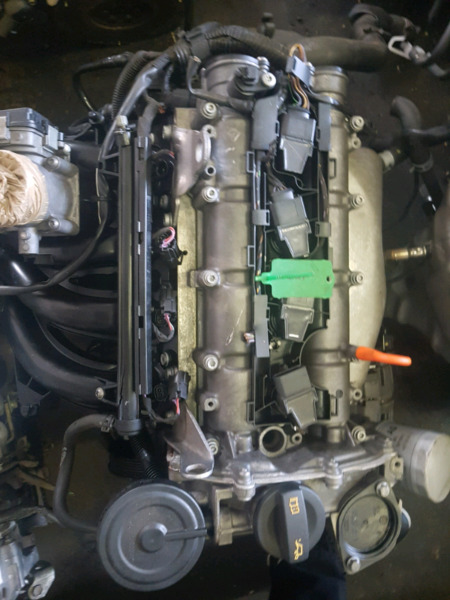Just How a Clp Engine Can Improve Performance in Various Industries
The introduction of CLP engines notes a substantial shift in operational performance throughout different sectors, driven by their ability to maximize gas usage and decrease downtime. As organizations significantly focus on sustainability alongside performance, the duty of CLP engines ends up being even a lot more critical.
Review of CLP Engines
CLP engines, or Continuous Fluid Propellant engines, stand for a significant development in propulsion technology, especially for room applications. These engines use a continuous feed system that permits the continual expulsion of propellant, bring about boosted performance and performance contrasted to traditional solid or hybrid propulsion systems. By maintaining a continuous flow of fluid propellant, CLP engines can achieve much more accurate thrust control, which is crucial for steering spacecraft in numerous goal situations.
The style of CLP engines integrates sophisticated materials and cutting-edge fuel monitoring systems. clp engine. This causes reduced weight and enhanced reliability, important variables for long-duration room objectives. The constant procedure minimizes the risk of burning instability, a typical difficulty in traditional rocket engines.

Benefits in Manufacturing
The production of Continuous Fluid Propellant (CLP) engines provides numerous noteworthy benefits that enhance both efficiency and cost-effectiveness. Among the primary advantages is the streamlined manufacturing procedure, which lowers the complexity connected with conventional propulsion systems. By utilizing fluid propellant, manufacturers can accomplish higher precision in engine performance, resulting in maximized power outcome and minimized waste.
Furthermore, CLP engines facilitate a greater degree of modularity, permitting easier integration into numerous production lines. This flexibility can significantly lower lead times and boost overall functional adaptability. The use of CLP technology likewise tends to lessen the need for comprehensive maintenance as a result of fewer moving components, which converts right into minimized downtime and functional costs.

Applications in Logistics
Leveraging Constant Fluid Propellant (CLP) engines in logistics uses substantial advantages in operational performance and reliability. These engines supply why not find out more a robust option for different transport needs, enabling the smooth movement of goods throughout large ranges. The intrinsic layout of CLP engines permits constant power result, which translates into smoother and more predictable transport routines.
Among the vital applications of CLP engines in logistics is in heavy-duty freight transportation, where they can drive both ground and airborne automobiles. Their capability to maintain high efficiency under varying load conditions makes sure that shipment timelines are fulfilled, therefore boosting consumer complete satisfaction. In addition, CLP engines can be incorporated into automated logistics systems, helping with real-time monitoring and enhancing path preparation.
Moreover, the resilience of CLP engines decreases maintenance downtime, allowing logistics firms to maximize their functional capacities. This is particularly valuable in warehousing procedures, where performance in managing and transferring products is critical. As logistics remains to develop, the assimilation of CLP engines represents a forward-thinking strategy that not only enhances efficiency yet also supports the sector's expanding needs for dependability and rate.
Effect On Power Efficiency
How do Constant Fluid Propellant (CLP) engines improve power efficiency in transport? CLP engines use a regular circulation of fluid fuel, optimizing burning procedures and keeping a secure thrust outcome. This style decreases energy losses associated with standard combustion engines, where gas distribution can differ and result in ineffectiveness.
The continual procedure of CLP engines enables a much more efficient thermal cycle, resulting in higher particular impulse contrasted to standard engines. clp engine. This equates to minimized gas consumption for the exact same amount of job done, significantly decreasing operational costs across numerous transport markets, consisting of air travel and maritime industries
In addition, the ability of CLP engines to keep ideal this contact form efficiency under differing load problems reduces the requirement for regular velocity and deceleration, better improving gas effectiveness. Boosted energy efficiency not just adds to cost savings but likewise causes lower greenhouse gas emissions, straightening with international sustainability goals.
Future Trends and Innovations
Emerging developments in Constant Liquid Propellant (CLP) engine technology guarantee to revolutionize the landscape of transportation efficiency and sustainability. As sectors pivot towards greener alternatives, CLP engines stand at the leading edge, incorporating ingenious products and layout methods that enhance performance while reducing ecological effect.
One of one of the most appealing patterns is the adoption of crossbreed systems that combine CLP engines with renewable resource sources. read what he said This harmony can enhance fuel usage and minimize emissions, aligning with worldwide sustainability goals. Additionally, innovations in computational liquid dynamics (CFD) are assisting in the design of even more aerodynamically effective engines, bring about minimized drag and enhanced fuel effectiveness.
Moreover, the development of smart tracking systems is established to improve operational performances. These systems take advantage of data analytics and IoT innovation to enhance engine performance in real-time, ensuring that the engines operate within their most effective parameters.
As study remains to explore alternate propellant formulations-- such as biofuels and artificial fuels-- the future of CLP engines looks encouraging. By utilizing these developments, markets can not only enhance their efficiency yet additionally contribute substantially to a cleaner, a lot more sustainable future in transportation.
Verdict
In conclusion, CLP engines stand for a considerable advancement in performance across several industries. The assimilation of innovative products and fewer moving parts reduces upkeep demands, while placement with sustainability objectives positions CLP engines as an essential technology for the future.